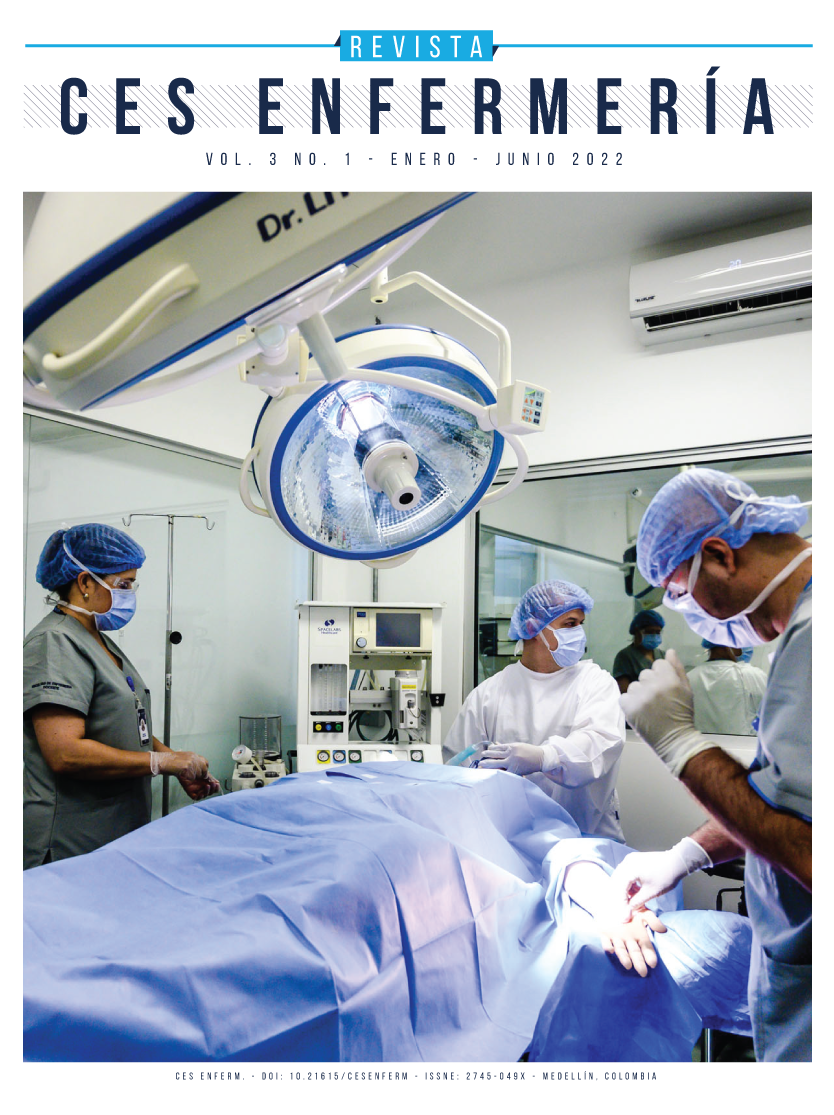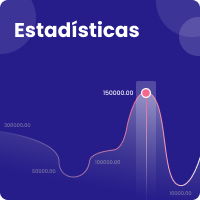Sleep practices and use of leisure time as factors associated with the body fat percentage in university students
DOI:
https://doi.org/10.21615/cesenferm.6472Keywords:
sleep habits, body composition, adipose tissue, students, exerciseAbstract
Introduction: from a nutritional perspective, body fat percentage is a determining factor for health, as it denotes a person’s body composition and is related to the existence of chronic illnesses. Objective: to evaluate sleep habits and the use of free time as possible factors associated with body fat percentage among the university students. Methodology: through a cross-sectional quantitative study constructed upon the analysis of secondary sources. We performed univariate analysis to describe the sociodemographic characteristics and bivariate analysis to determine an association between the two through the use of the Chi-squared test and Fisher’s exact test. Results: we analyzed data collected from 194 participants, who had a median age of 19 years old (IQR=3), from which 87% were women. More than half performed some kind of physical activity (72%), regularly used the internet, and slept 7 hours (60%). Most of the male participants showed body fat percentages considered to be low, while 35% of the females presented an excessive body fat percentage, being this one the most common category for this group. Conclusion: the only factor of interest that we were able to associate in a significant matter with body fat percentage was the “sleeps well” variable, thus showing that most sleep habits and the use of free time were not associated with body fat percentage among students.
Downloads
References
González G, Hernández S, Pozo P, García D. Asociación entre tejido graso abdominal y riesgo de morbilidad: efectos positivos del ejercicio físico en la reducción de esta tendencia. Nutr Hosp. 2011 Aug;26(4): 685-691
Spiegel K, Tasali E, Penev P, Van Cauter E. Sleep Duration and Levels of Hormones That Influence Hunger. Ann Intern Med. 2004 Dec 7;141(11):I–52.
Spiegel K, Tasali E, Penev P, Cauter EV. Brief Communication: Sleep Curtailment in Healthy Young Men Is Associated with Decreased Leptin Levels, Elevated Ghrelin Levels, and Increased Hunger and Appetite. Ann Intern Med. 2004 Dec 7;141(11):846-50.
Chaput J, Després J, Bouchard C, Tremblay A. Short sleep duration preferentially increases abdominal adiposity in adults: preliminary evidence: Short sleep duration and abdominal adiposity. Clinical Obesity. 2011 Aug;1(4–6):141–6.
Knutson KL. Impact of Sleep and Sleep Loss on Glucose Homeostasis and Appetite Regulation. Sleep Medicine Clinics. 2007 Jun;2(2):187–97.
Bel S, Michels N, De Vriendt T, Patterson E, Cuenca M, Diethelm K, et al. Association between self-reported sleep duration and dietary quality in European adolescents. Br J Nutr. 2013 Sep 14;110(5):949–59.
Nedeltcheva AV, Kilkus JM, Imperial J, Kasza K, Schoeller DA, Penev PD. Sleep curtailment is accompanied by increased intake of calories from snacks. The American Journal of Clinical Nutrition. 2009 Jan 1;89(1):126–33.
Broussard JL, Kilkus JM, Delebecque F, Abraham V, Day A, Whitmore HR, et al. Elevated ghrelin predicts food intake during experimental sleep restriction: Sleep Restriction, Ghrelin, and Food Intake. Obesity. 2016 Jan;24(1):132–8.
Díaz S, González F, Arrieta KM. Physical activity levels associated with sociodemographic, anthropometric and behavioral factors in university students of Cartagena (Colombia). Salud, Barranquilla (Internet). 2014 Dec 15 (cited 2021 Dec 4);30(3):405–17. Available from: http://www.scielo.org.co/scielo.php?script=sci_abstract&pid=S0120-55522014000300014
Colić I, Šatalić Z, Lukešić Ž. Nutritive value of meals, dietary habits and nutritive status in Croatian university students according to gender. International Journal of Food Sciences and Nutrition. 2003 Jan;54(6):473–84.
Huertas CA, Cadavid DC, Vásquez AM, Vélez JS. Cultural consuming and use of the free time among lasallian students. Revista Lasallista de Investigación. 2008 Jul;5(2):36–47.
Muñoz DI, Roldán P. Comportamientos, actitudes y estilos de vida relacionados con la salud en la comunidad universitaria de la universidad CES en el año 2014. (Tesis). (Medellín): Universidad CES; 2014.
Durnin JV, Womersley J. Body fat assessed from total body density and its estimation from skinfold thickness: measurements on 481 men and women aged from 16 to 72 years. Br J Nutr 1974; 32(1): 77-97.
Jackson AS, Pollock ML, Ward A. Generalized equations for predicting body density of women. Med Sci Sports Exerc. 1980;12(3):175-81.
Jackson AS, Pollock ML. Generalized equations for predicting body density of men. Br J Nutr. 1978;40(3):497-504.
Resolución 8430 de 1993. Bogotá: Ministerio de Salud; 1993.
Ledo MT, Luis Román DA, González M, Izaola O, Conde R, Aller R. Características nutricionales y estilo de vida en universitarios. Nutrición Hospitalaria. 2011 Aug;26(4):814–8.
Rodríguez F, Palma X, Romo Á, Escobar D, Aragú B, Espinoza L, et al. Hábitos alimentarios, actividad física y nivel socioeconómico en estudiantes universitarios de Chile. Nutrición Hospitalaria. 2013 Apr;28(2):447–55.
Serpa J, Castillo E, Gama A, Giménez F. Relación entre actividad física, composición corporal e imagen corporal en estudiantes universitarios. SPORT TK-Revista EuroAmericana de Ciencias del Deporte. 2017 Jul 24;6(2):39–48.
Sa J, Choe S, Cho B, Chaput J, Kim G, Park C, et al. Relationship between sleep and obesity among U.S. and South Korean college students. BMC Public Health. 2020 Jan 22;20(1):96.
Ruiz EM. Relación entre porcentaje de grasa corporal y calidad de sueño en universitarios con índice de masa corporal normal (Tesis). (Lima): Universidad Nacional Mayor de San Marcos; 2015. 54 p.
Rodríguez J, Agulló E. Estilos de vida, cultura, ocio y tiempo libre de los estudiantes universitarios. Psicothema. 1999;11(2):247–59.
Rodríguez MG, Martínez A. Efectos de una estrategia de intervención educativa para la incorporación de la actividad física como hábito en jóvenes de la Universidad Surcolombiana de la asignatura ‘deporte formativo’, semestre 2013-2. Entornos. 2017 Nov;30(2):79-87.
Gallardo I, Daza TA, Huerta KB. Correlación de la composición corporal por plicometría y bioimpedancia en estudiantes de nutrición. Rev Esp Med Quir. 2012;17(1):15–9.
Suaza JJ, De La Cruz DT. Relación de los hábitos alimentarios y la calidad de sueño con el porcentaje de grasa corporal en estudiantes de la carrera de Nutrición Humana entre 16-30 años (Tesis). (Lima): Universidad Peruana Unión; 2020 Jun 1. 10 p.
Ríos A. Asociación entre calidad de sueño, índice de masa corporal y porcentaje de grasa corporal en estudiantes de una universidad pública (Tesis). (Lima): Universidad Nacional Mayor de San Marcos; 2019. 51 p.
Alonso LM, Pérez MÁ, Alcalá G, Lubo A, Consuegra A. Comportamientos de riesgo para la salud en estudiantes colombianos recién ingresados a una universidad privada en Barranquilla (Colombia). Salud, Barranquilla. 2008 Dec;24(2):235–47.
Cardozo LA. Body fat percentage and prevalence of overweight - obesity in college students of sports performance in Bogotá, Colombia. Nutr. clín. diet. hosp. 2016;36(3):68–75.
Low S, Chin MC, Deurenberg-Yap M. Review on epidemic of obesity. Ann Acad Med Singap. 2009 Jan;38(1):57–9.
Ruiz M, Cifuentes MT, Segura O, Chavarria P, Sanhueza X. Estado nutricional de trabajadores bajo turnos rotativos o permanentes. Revista chilena de nutrición. 2010 Dec;37(4):446–54.
Rangel LG, Rojas LZ, Gamboa EM. Physical activity and body composition among college students of physical culture, sport and recreation. Revista de la Universidad Industrial de Santander Salud. 2015 Dec;47(3):281–90.
AL-Otaibi HH. Associations between Sleep Quality and Different Measures of Obesity in Saudi Adults. GJHS. 2016 May 8;9(1):1.
Kabrita C, Hajjar-Muça T, Duffy J. Predictors of poor sleep quality among Lebanese university students: association between evening typology, lifestyle behaviors, and sleep habits. NSS. 2014 Jan;11.
Pengpid S, Peltzer K. Prevalence of overweight/obesity and central obesity and its associated factors among a sample of university students in India. Obesity Research & Clinical Practice. 2014 Nov;8(6):558–70.
Öztürk ME, Yabancı N. Associations between Poor Sleep Quality, Obesity, and the Anthropometric Measurements of Women in Turkey. Ecology of Food and Nutrition. 2018 Jan 2;57(1):3–12.
Escobar F, Eslava J. Validación colombiana del índice de calidad de sueño de Pittsburgh. RevNeurol. 2005;40(03):150.
El Haboussi A, Hilali MK, Loukid M. Association entre le niveau d'activité physique, l'indice de masse corporelle et la masse grasse chez des jeunes scolarisés dans la Wilaya de Marrakech (Maroc). The Pan African medical journal. 2020;35(78).
Downloads
Published
How to Cite
Issue
Section
License
Copyright (c) 2022 CES Enfermería

This work is licensed under a Creative Commons Attribution-NonCommercial-ShareAlike 4.0 International License.
| Article metrics | |
|---|---|
| Abstract views | |
| Galley vies | |
| PDF Views | |
| HTML views | |
| Other views | |




